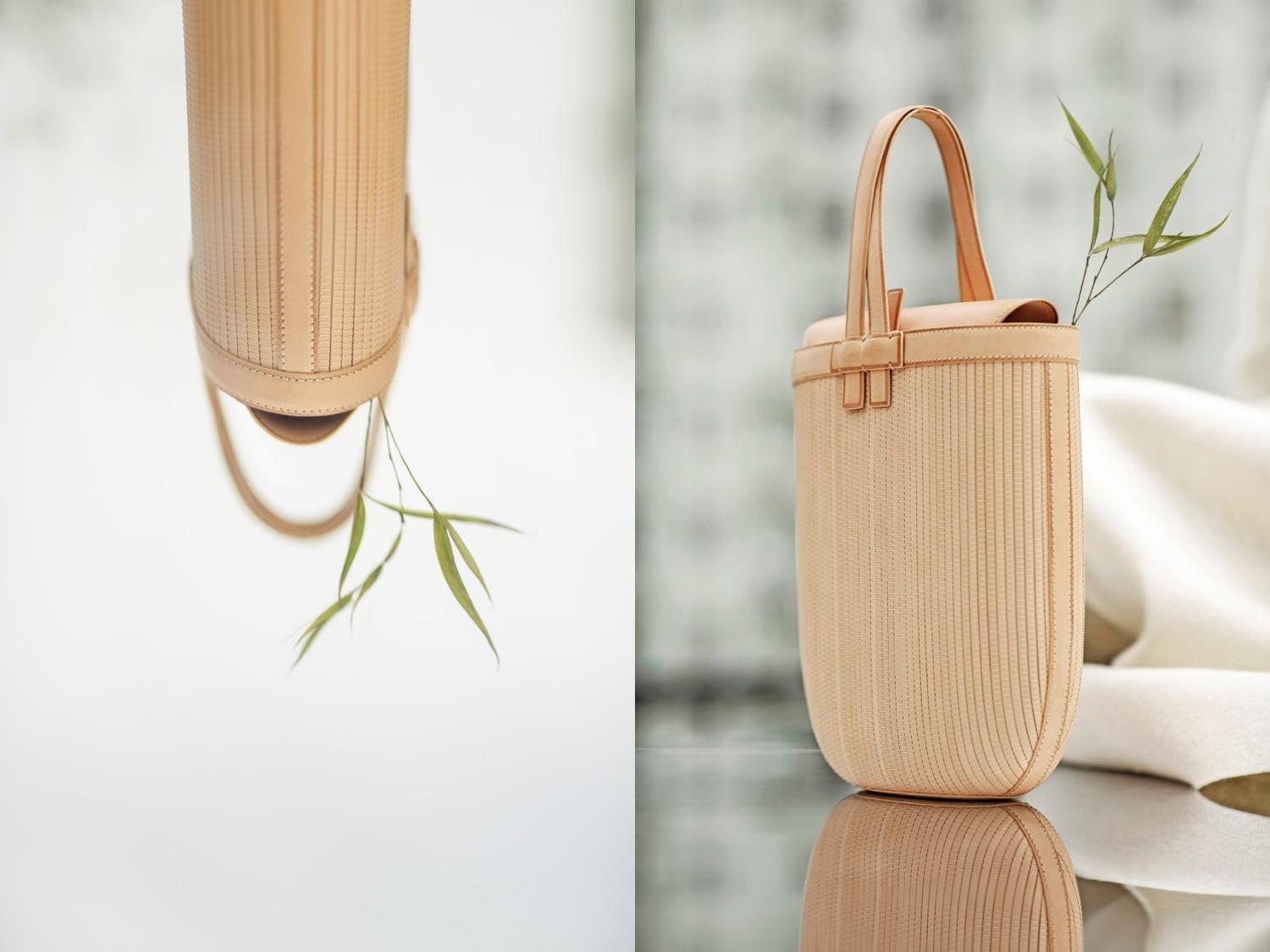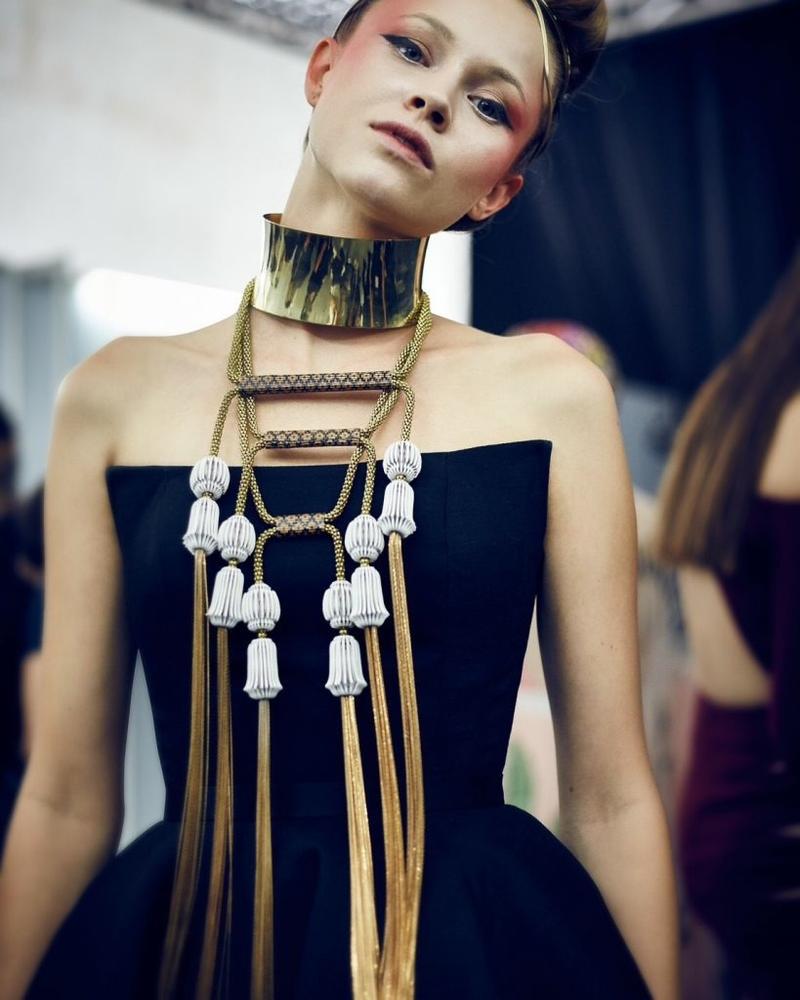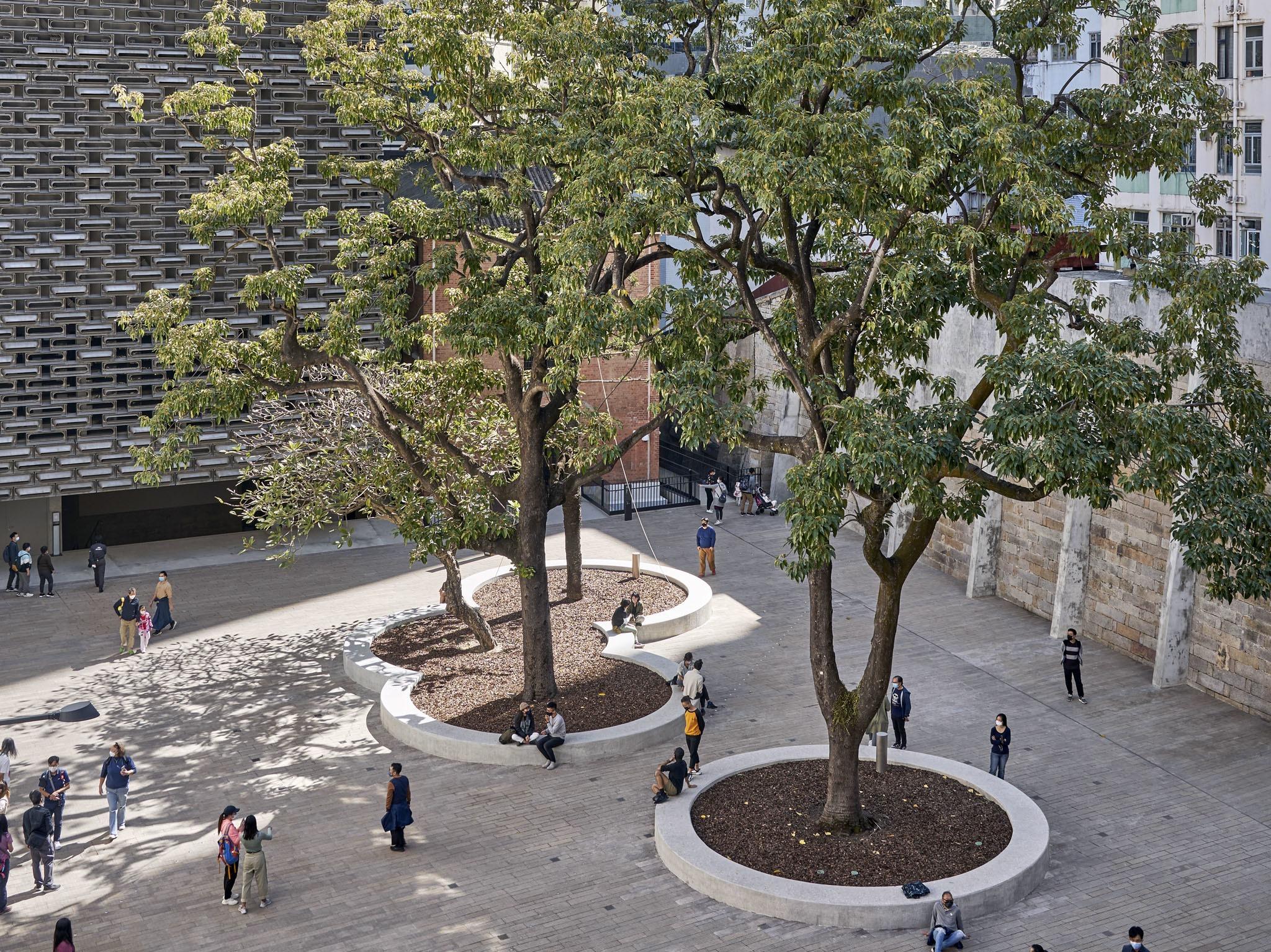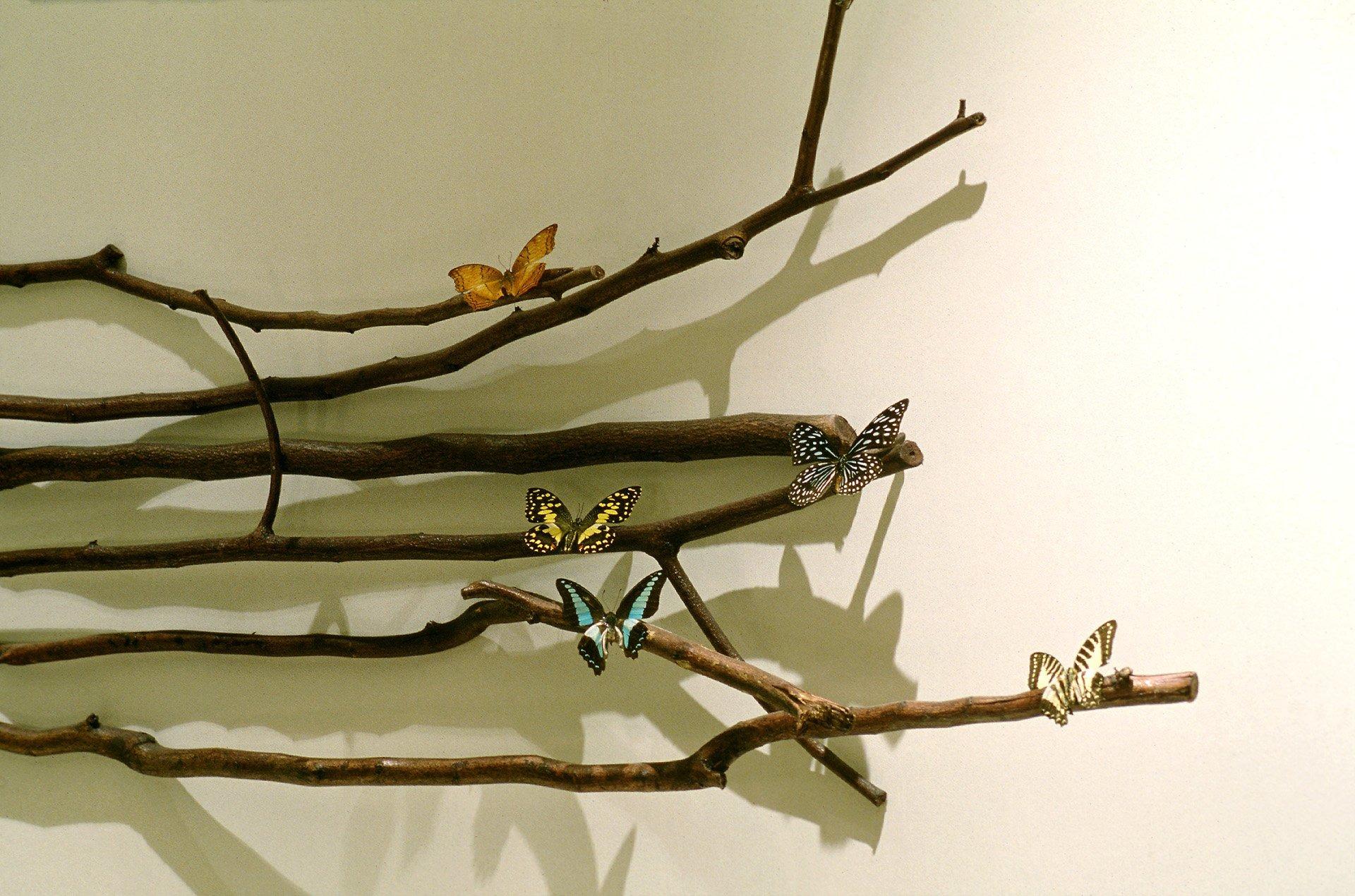While most designers today have clear-cut sustainability goals, many of them are trying to incorporate cultural conservation within that framework. Gennady Oreshkin elaborates on his takeaways from Hong Kong’s flagship annual design event, Business of Design Week.
 Jiang Qiong’er won the DFA World Outstanding Chinese Designer Award 2023. Jiang is the creative director and co-founder of Shang Xia, a luxury brand known for adapting designs from Chinese imperial palaces to make bamboo objects of everyday use that suit a contemporary lifestyle. (PROVIDED TO CHINA DAILY)
Jiang Qiong’er won the DFA World Outstanding Chinese Designer Award 2023. Jiang is the creative director and co-founder of Shang Xia, a luxury brand known for adapting designs from Chinese imperial palaces to make bamboo objects of everyday use that suit a contemporary lifestyle. (PROVIDED TO CHINA DAILY)
Jiang Qiong’er, who has been championing the cause of cultural conservation for years, won the DFA World’s Outstanding Chinese Designer Award 2023. The award was presented to her on Nov 30 as part of Business of Design Week (BODW) — Hong Kong’s flagship annual design event, held this year at Freespace in the West Kowloon Cultural District.
Jiang is the creative director and co-founder of lifestyle brand Shang Xia — often referred to as “the Chinese Hermès”. Since 2008, she has been applying traditional Chinese artisanal practices to create her line of luxury products, and has found an international following.
Her brand specializes in marrying tradition with new technologies, while adhering to the best of sustainability standards.
 Jiang Qiong’er won the DFA World Outstanding Chinese Designer Award 2023. Jiang is the creative director and co-founder of Shang Xia, a luxury brand known for adapting designs from Chinese imperial palaces to make bamboo objects of everyday use that suit a contemporary lifestyle. (PROVIDED TO CHINA DAILY)
Jiang Qiong’er won the DFA World Outstanding Chinese Designer Award 2023. Jiang is the creative director and co-founder of Shang Xia, a luxury brand known for adapting designs from Chinese imperial palaces to make bamboo objects of everyday use that suit a contemporary lifestyle. (PROVIDED TO CHINA DAILY)
One of the major challenges she is faced with “is that 90 percent of traditional artisanal products are decorative, with virtually no functional value”. But Jiang usually finds a way of applying artisanal techniques to make objects that can be put to use. For instance, she borrowed the technique of bamboo marquetry weaving — traditionally used to make decorative objects for Chinese imperial palaces — to create a variety of utility items such as boxes, containers and furniture pieces along with traditional Chinese screens and jewelry. Shang Xia also designs bamboo marquetry spaces — enclosures the size of small living rooms, with bamboo screens for walls. Jiang says such spaces could be used to relax or meditate.
Bamboo is considered one of the most sustainable natural materials. The plant grows thick and rapidly, without the aid of fertilizers. The density of the marquetry sheets can be manipulated by varying the thickness of the fibers used. Jiang says Shang Xia’s first woven bamboo product was a handbag inspired by imperial baskets. It took her five years to develop the product and raise it to the fine standards of a luxury item.
 Speaking at Business of Design Week, M.L. Kathathong Thongyai from Thailand’s Ministry of Commerce referred to fashion designer Sarran Youkongdee, who makes accessories resembling precious jewelry worn at Thai sacred rituals but are in fact made from recycled paper. (PROVIDED TO CHINA DAILY)
Speaking at Business of Design Week, M.L. Kathathong Thongyai from Thailand’s Ministry of Commerce referred to fashion designer Sarran Youkongdee, who makes accessories resembling precious jewelry worn at Thai sacred rituals but are in fact made from recycled paper. (PROVIDED TO CHINA DAILY)
 Speaking at Business of Design Week, M.L. Kathathong Thongyai from Thailand’s Ministry of Commerce referred to fashion designer Sarran Youkongdee, who makes accessories resembling precious jewelry worn at Thai sacred rituals but are in fact made from recycled paper. (PROVIDED TO CHINA DAILY)
Speaking at Business of Design Week, M.L. Kathathong Thongyai from Thailand’s Ministry of Commerce referred to fashion designer Sarran Youkongdee, who makes accessories resembling precious jewelry worn at Thai sacred rituals but are in fact made from recycled paper. (PROVIDED TO CHINA DAILY)
Think local
According to architect, interior designer and restaurateur Steve Leung, while being respectful toward tradition is laudable, adapting said tradition to a modern context is equally important. The mark of a good design lies in its adaptability to the lifestyle of the client. During his BODW keynote speech, “Designing for Asia and Beyond: Steve Leung’s Game-Changing Transformations”, Leung shared his recent experience of designing a model flat for the Symphony Bay housing complex in Ma On Shan.
 Speaking at Business of Design Week, M.L. Kathathong Thongyai from Thailand’s Ministry of Commerce referred to fashion designer Sarran Youkongdee, who makes accessories resembling precious jewelry worn at Thai sacred rituals but are in fact made from recycled paper. (PROVIDED TO CHINA DAILY)
Speaking at Business of Design Week, M.L. Kathathong Thongyai from Thailand’s Ministry of Commerce referred to fashion designer Sarran Youkongdee, who makes accessories resembling precious jewelry worn at Thai sacred rituals but are in fact made from recycled paper. (PROVIDED TO CHINA DAILY)
“When the property developer approached me to design a luxury show flat, they expected it to look like the apartments in Mid-Levels, Repulse Bay or Kowloon Tong, which are often associated with Hong Kong’s colonial past in terms of their aesthetics,” Leung says. “However, since Ma On Shan has a fundamentally different environment — having more open spaces, a proximity to water and younger residents — I chose a different approach.”
Instead of using expensive Western-style wallpaper or fabric panels, Leung opted for found materials, like branches washed up on the nearby beach, to decorate the walls. The property developer was reluctant to greenlight such an idea at first, failing to see how dead branches put up on walls qualified as “luxury”. But Leung was confident that a relatively younger, and conscious, clientele was going to appreciate the thought behind his creative decision. “In the end, I managed to convince the developers, and the response from customers and the media has been fantastic.”
 Stones left over from the old prison structure as a result of Tai Kwun’s revitalization were recycled to make planters in order to protect the root systems of the trees in the compound. (PROVIDED TO CHINA DAILY)
Stones left over from the old prison structure as a result of Tai Kwun’s revitalization were recycled to make planters in order to protect the root systems of the trees in the compound. (PROVIDED TO CHINA DAILY)
Old is architecture gold
When it comes to designing for historical sites, designers need to be highly aware of government regulations on listed buildings. At the BODW panel titled “Designing for Public Good”, Gilles Vanderstocken, founder and director of Beau Architects, shared his experience of designing for a public sitting-out area in Tai Kwun — the former central police compound turned public facility that opened in 2018, following a massive revitalization process.
It was a challenging brief that required the design team to leave space for the trees in the courtyard to continue to grow both under the ground and above it without obstruction. Seeing that three heritage structures in the compound — the Central Police Station, Central Magistracy, and Victoria Prison — are listed as Declared Monuments under the Antiquities and Monuments Ordinance, preserving the compound’s heritage elements was also of utmost importance.
 Gilles Vanderstocken, founder and director of Beau Architects, shared the story at Business of Design Week. (PROVIDED TO CHINA DAILY)
Gilles Vanderstocken, founder and director of Beau Architects, shared the story at Business of Design Week. (PROVIDED TO CHINA DAILY)
“We decided to use recycled materials to build large planters around the trees to support their root systems,” Vanderstocken says. He reveals that the owner of the property, the Hong Kong Jockey Club, “has a giant storage full of various materials left over from the old prison, some dating back to the 19th century”.
“So we crushed some stones that were a part of the original prison structures and mixed them with concrete to create the planters.”
The concrete shapes thus created blended in beautifully with Tai Kwun’s aesthetic, making for a shining example of, as Vanderstocken puts it, “the essence of cultural sustainability”.
 Architect and interior designer Steve Leung chose an aesthetic reflecting neighborhood ethos to dress up the apartments in Ma On Shan’s Symphony Bay housing complex. (PROVIDED TO CHINA DAILY)
Architect and interior designer Steve Leung chose an aesthetic reflecting neighborhood ethos to dress up the apartments in Ma On Shan’s Symphony Bay housing complex. (PROVIDED TO CHINA DAILY)
 Leung made sculptures out of dead branches that had washed up on the nearby beach to decorate the walls. (PROVIDED TO CHINA DAILY)
Leung made sculptures out of dead branches that had washed up on the nearby beach to decorate the walls. (PROVIDED TO CHINA DAILY)
Precious paper
At a BODW fireside chat titled “Crafting a Modern Thai Identity: Tradition and Innovation in Design”, M.L. Kathathong Thongyai, assistant director of international trade promotion with Thailand’s Ministry of Commerce, shared how Thai designers are increasingly adapting artisanal techniques to make sustainable products. To illustrate his point, Thongyai mentioned Thai fashion designer Sarran Youkongdee, who is a regular at New York Fashion Week and has collaborated with international stars such as Lisa from Blackpink.
The accessories created by Youkongdee are inspired by the jewels associated with Thai sacred rituals. “But if you look at them closely,” Thongyai says, “these pieces are made from recycled paper, made more durable and waterproof”.
The trend of designers embracing and utilizing artisanal techniques, in some cases those on their way to extinction, as a way of continuing one’s cultural legacy is catching on around the world. And in this respect the designers from the Eastern Hemisphere seem to be leading the way. As Shang Xia’s Jiang says, “We might be seeing the beginning of a renaissance of traditional craftsmanship in a new, sustainable context.”


